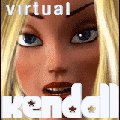I can only really give hints and tips about Daz Studio related things, but that does extend to plug-ins so I can 'cover' 3Delight (the in-built, supplied render engine), Octane (via Octane for Daz Studio (OcDS)) and LuxRender (via Reality or Luxus plug-in).
I do not intend a render-war, so can we all be civil and offer help, tips and suggestions instead of X is better than Y?
3Delight is a biased render engine which means, so far as I can tell, it cheats like a bastard!

LuxRender and Octane are un-biased which means they use accurate portrayals of light properties.
All three have different definitions and representations of materials with, naturally, 3Delight winning the race as pretty much everything you load in Daz Studio has materials that 3Delight will understand. That may not mean you get a decent render from them though as they may be optimised for Poser and, as they say, 'requires some adjustments to materials in Daz Studio'

The plug-ins for LuxRender and Octane all perform some degree of conversion and all do a pretty good job. Where they all fail though is when the material in use is a custom Daz Shader. In such cases all you will get (without manual intervention) is a grey, smooth surface. The 'usual suspects' of the Human Surface Shader and UberSurface tend to be handled fairly well, which is good!
Additional differences are that Octane uses ONLY VRAM of your CUDA-compliant graphics cards (which pretty much, at the moment, means a nVidia card) and graphics chips on the card(s) for processing. This makes it pretty darned fast. It has three major render modes (called kernels) which progressively become more accurate and hence take longer, from 'Direct Lighting', via 'PathTracing' to 'PMC'. That is not to say that the DirectLighting kernel does not do a good job, it does. And quickly. Very quickly!
You get a fast buildup of an initial image with Octane, which is just as well as all the adjustments you can make on the fly cause a restart of the render. That may sound grim, but when, after 2 to 10 seconds, you can pretty much tell how the image is going to look you get used to the pattern of work that involves: 'throw a scene together' in DS, start OcDS and do any obvious tweaks (such as setting up mesh lights - think DS UberArea light) and fire up the Render. You, sometimes, need to give Octane a nudge to pick up some texture/material data and that becomes, as I said, quickly apparent. If you use the Sunlight model for lighting (other ones are use HDRI and none) you can drag sliders around to have Octane use the longitude, latitude, day and time you specify, plus you have an 'offset' slider to tweak more - meaning you can say (I want my sunlight to look like it would be when I am in London at 12:32 on the 17th of September). Twiddle with those for a while so that you get your light and shadows falling just as you want, then let the render go!
LuxRender uses general computer RAM and CPUs with the option of using GPUs (of a OpenCL compliant card - note that is OpenCL NOT OpenGL) for an extra boost (or, I think, JUST the GPUs - I am a little behind the curve on it's current state of play). Both the plug-ins handle things in a different way, with Luxus giving more access to the stuff under the covers and, hence, being a little more complex and daunting. Reality hides a lot of the 'scary stuff' and does that well. To get the best form either (which, in essence, means getting the best from LuxRender) you will probably need to do some manual adjusting of materials - I generally find that I need to reduce the glossiness levels. One common cry is that 'but it takes aaaaaaaggggges'. Yes, renders in LuxRender can take a while. But depending on what you are after there are various tips, props and techniques that can help out greatly with this. A lady with the screen name of CalladsReality (on deviantART) has produced some props/lights for use in 'photo studio shots' that can produce decent images in a reasonably short period of time. A bonus for LuxRender is the ability to pause/stop/restart renders (including across machine shutdown). You also get, for free, the ability to do network renders so any spare computers you have can be shanghaied into helping out.
In essence, all three render engines are just 'tools in the box' - each with strengths and weaknesses. They can all do a great job. They can also all produce a pile of tat - GIGO!!!











